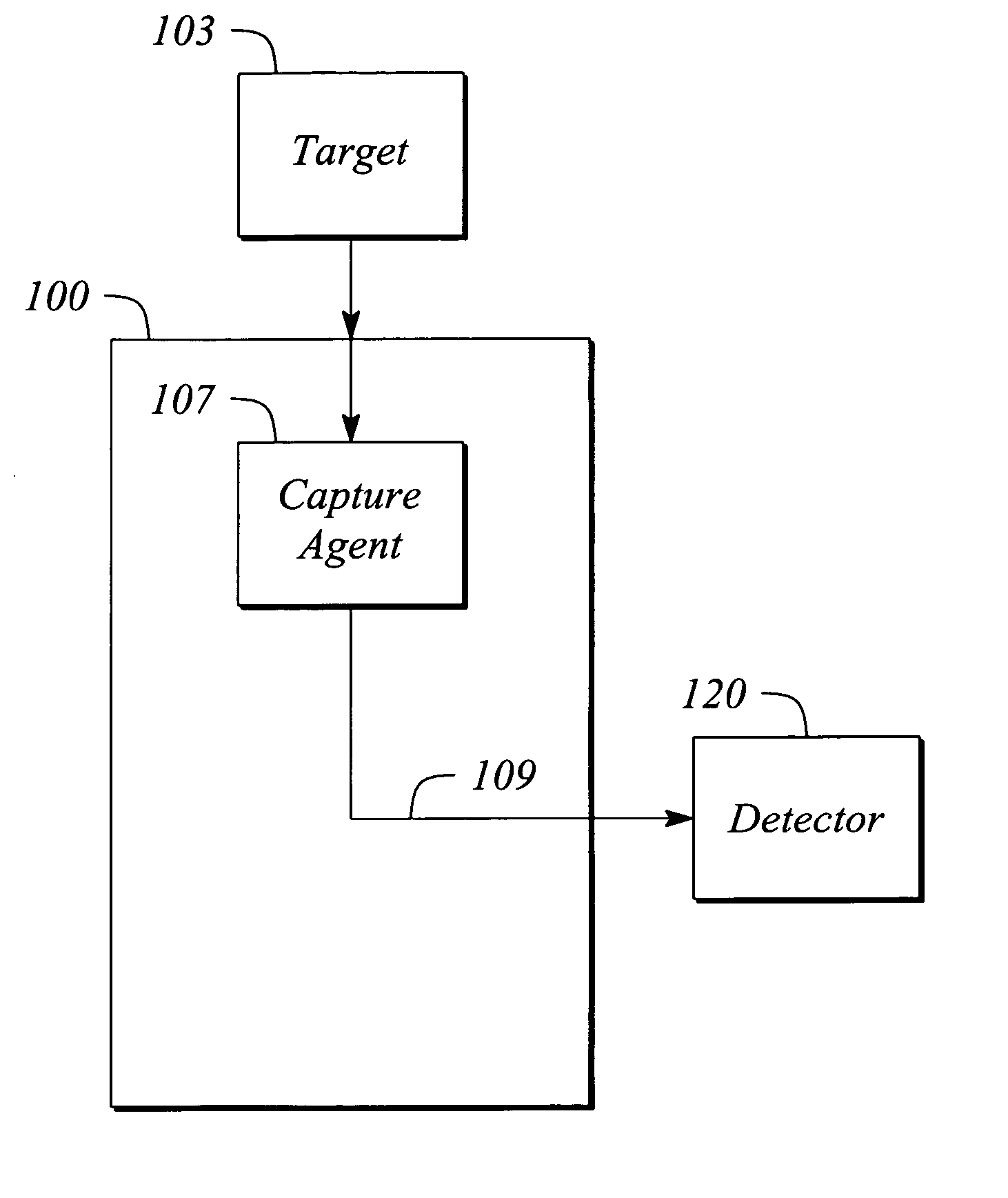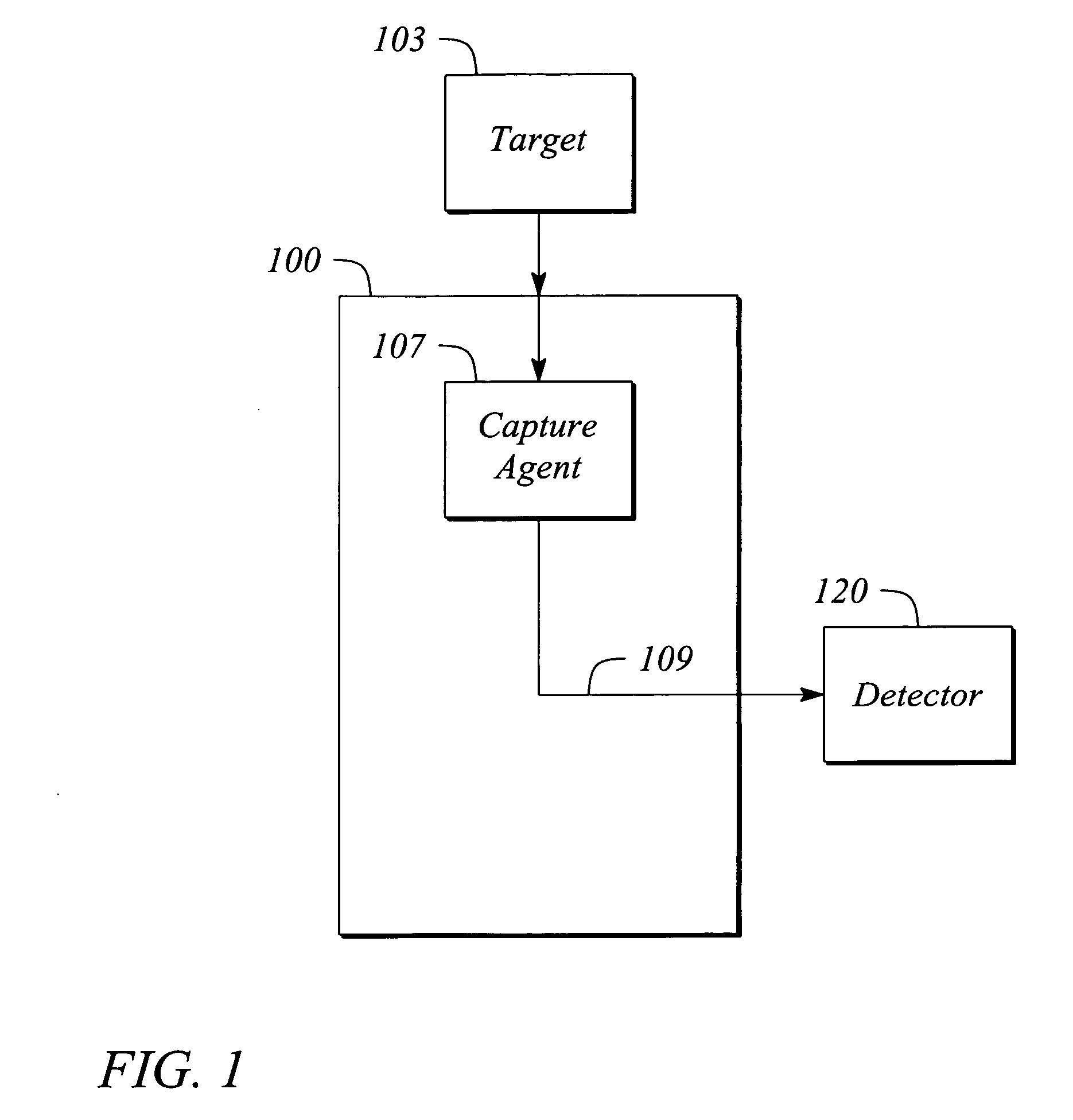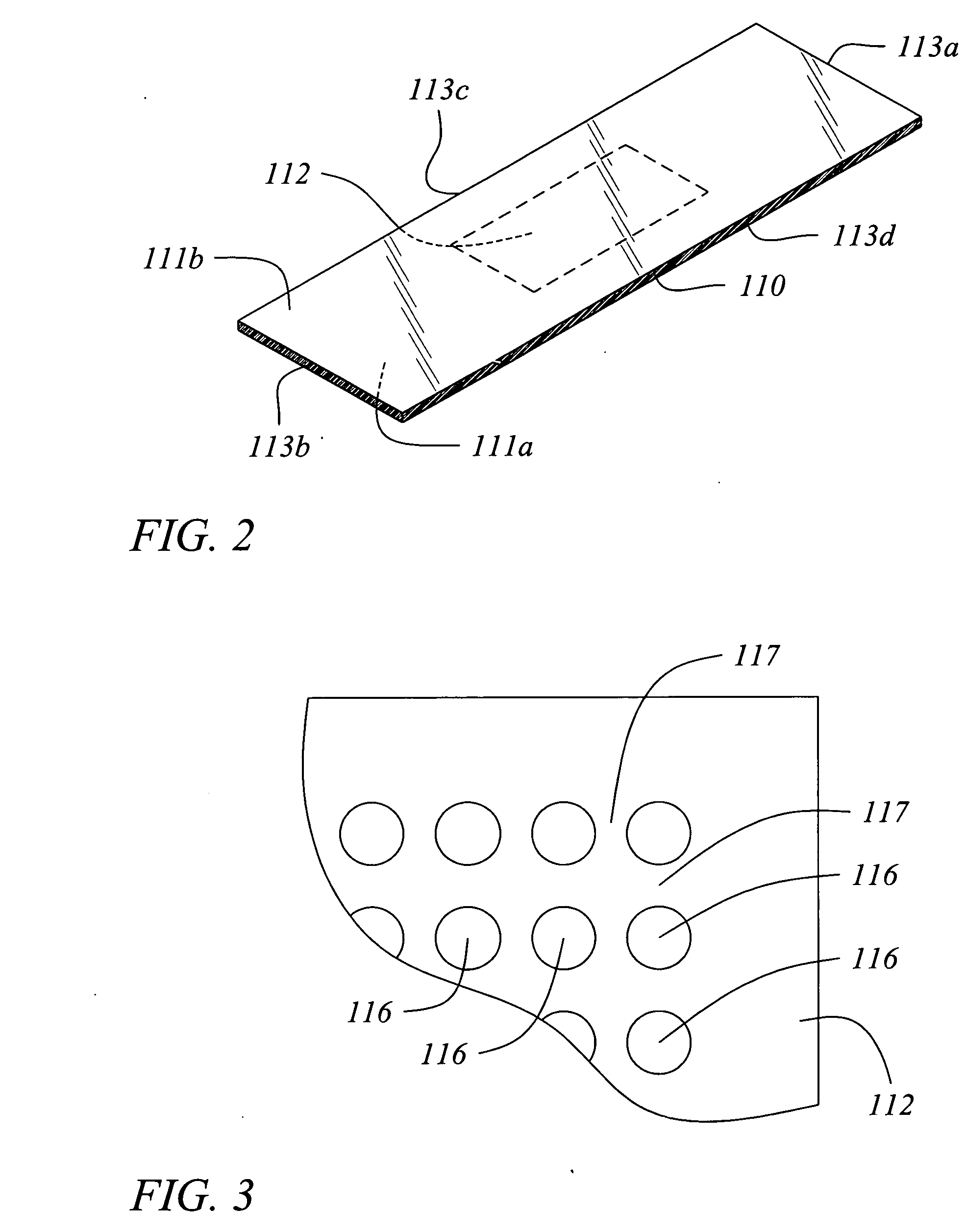Microarray based affinity purification and analysis device coupled with solid state nanopore electrodes
a nanopore electrode and affinity purification technology, applied in the field of microarrays, can solve the problems of increasing the cost of labeling, affecting the completion of assays, and affecting the accuracy of assays,
- Summary
- Abstract
- Description
- Claims
- Application Information
AI Technical Summary
Problems solved by technology
Method used
Image
Examples
second embodiment
[0063] Referring now to FIGS. 7C and 7D, the invention, a series of separate substrates may be employed. For instance, a first substrate 12 and a second substrate 18 may be employed in place of the single substrate 8. In this embodiment of the invention, the first electrode 7 comprises first substrate 12 or a portion of this substrate. The electrode may be embedded, attached, layered, deposited, etched on the substrate or it may comprise all or a portion of the first substrate 12. Second electrode 9 comprises the second substrate 18 or a portion of the substrate. The electrode may be embedded, attached, layered, deposited, etched on the substrate or it may comprise all or a portion of the second substrate 18. The first substrate 12 is positioned adjacent to the second substrate 18. The figure shows the first substrate 12 positioned spatially above the second substrate 18. The first electrode 7 may comprise a first nanopore 3 while the second electrode 9 may comprise a second nanopor...
third embodiment
[0064] Referring now to FIGS. 7E and 7F, the present invention is provided. In this embodiment, the first electrode 7 and the second electrode 9 are positioned in the same plane. One or more optional substrates or electrodes may be employed. When the optional substrate 8 is not employed, the first electrode 7 and the second electrode 9 may be positioned adjacent to the nanopore 3. Although the figures show a pair of electrodes, the invention should not be interpreted to be limited to only this configuration. Various electrodes of varying shapes or sizes may be employed. Furthermore, it is anticipated that the invention comprises a number of similar or different electrodes capable of tunneling in a variety of directions and space (i.e. one, two and three dimensional space).
[0065] Referring now to FIG. 7G another embodiment of the present invention is shown. FIG. 7G illustrates a cross-sectional detail of an embodiment 300 of the present invention. Embodiment 300 is an embodiment in w...
embodiment 300
[0066] As seen in FIG. 7G, embodiment 300 comprises a nanopore 308 that is wide near its lower end and narrow near its upper end. Membrane 306 comprises a region of a material such as silicon dioxide, and the lower ring-shaped electrode 310 comprises a conductor such as platinum. Lower electrode 310 is formed in a manner that surrounds the perimeter of nanopore 308. On top of lower electrode 310a lower insulator layer 312 is placed in a manner that surrounds the perimeter of nanopore 308 and leaves exposed a perimeter portion 330 of electrode 310. On top of lower insulator layer 312, an upper electrode 314 is formed in a manner that surrounds the perimeter of nanopore 308. On top of upper electrode 314 an upper insulator 316 is placed in a manner that surrounds the perimeter of nanopore 308 and leaves exposed a perimeter portion 332 of electrode 314. Hole 326 in top insulator 328 provides access to the upper end of the nanopore for a biopolymer molecule 334 represented schematically...
PUM
| Property | Measurement | Unit |
|---|---|---|
| Length | aaaaa | aaaaa |
| Nanoscale particle size | aaaaa | aaaaa |
| Nanoscale particle size | aaaaa | aaaaa |
Abstract
Description
Claims
Application Information
 Login to View More
Login to View More - R&D
- Intellectual Property
- Life Sciences
- Materials
- Tech Scout
- Unparalleled Data Quality
- Higher Quality Content
- 60% Fewer Hallucinations
Browse by: Latest US Patents, China's latest patents, Technical Efficacy Thesaurus, Application Domain, Technology Topic, Popular Technical Reports.
© 2025 PatSnap. All rights reserved.Legal|Privacy policy|Modern Slavery Act Transparency Statement|Sitemap|About US| Contact US: help@patsnap.com



